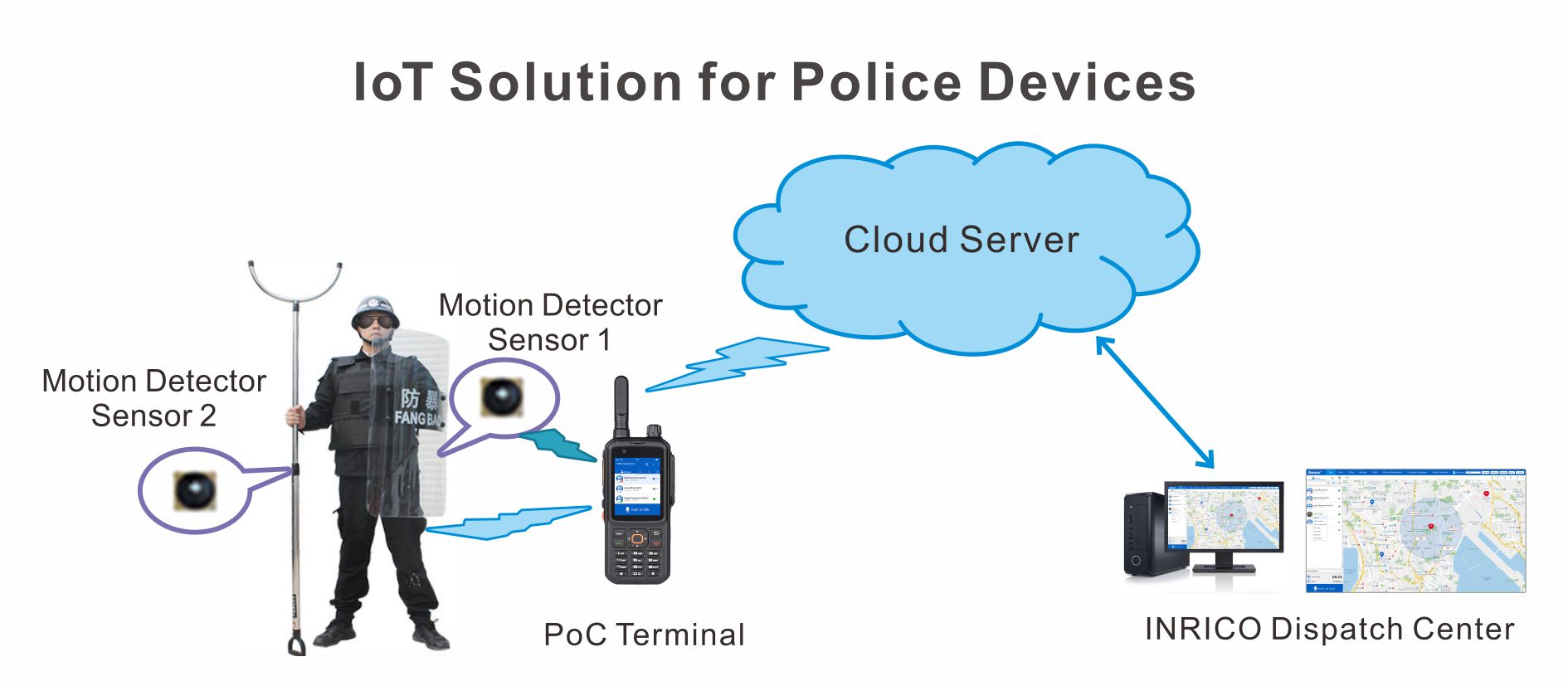Inrico, a global leading provider of professional wireless communications, leverages its expertise in Push-to-talk over Cellular (PoC), Professional Mobile Radio (PMR), and dispatching software development, and customizes communication and dispatching solutions for the public safety command center and school districts to enable efficient coordination and collaboration for daily security work at the campus, as well as for potential emergencies. In response to requirements from the police command center of Shunde city, Guangdong province, and the school district, Inrico develops a smart security system, which sets alarm level in a very strict manner in seconds prior the event and rapid response during critical moments, it offers an optimized emergency dispatching level for the whole process after the retrospective, so as to strive for the critical rescue time for emergencies.

1. Violence Control Instrument Management
As shown in the figure below, violence control instrument such as steel forks and shields for school security guards are currently deployed in almost every school. The main problem to be solved is to ensure correct usage in different situations. The motion detection sensor is installed on the equipment and connected to the system; sensors obtain data of whether the security instrument is being used.
The built-in motion detection sensor of the instrument transmits the detected data, whether it is in the motion state (working state) or static state (idle state), to the PoC handheld terminal through Bluetooth. When misuse is found, the PoC handheld terminal will automatically give audio remind and urge the security personnel to use the equipment correctly. At the same time, PoC handheld terminal transmits the status data of the security instrument to the main control software of PoC system through the data transmission channel of the Internet of Things (IoT), and the main control software interacts with the background software to send out alerts.
2. One-button SOS to Police Command Center
The violence control instrument has a built-in Bluetooth SOS button, which is connected to the PoC handheld terminal. In case of an emergency, the security personnel can press the SOS button while using the instrument to deal with the emergency at hand. The PoC handheld radio will initiate an emergency group call and at the same time, the radio will automatically turn on the camera and relay real-time video to the police command center. With onsite video and the PoC radio’s GPS location, the dispatcher can swiftly locate police forces nearby and dispatch them accordingly.
3. Direct Call from Police Command Center to School Security Staff
When the command center sees the alarm of violence control instruments, it is able to turn on the camera of the paired PoC radio and conduct real-time surveillance. The dispatcher can initiate one-to-one call directly with the security guard who is using that particular radio.
4. Traceability of Process and Status
The system can record the status of violence control instruments, PoC radio on/offline, voice calls, real-time video, and all that needs to be recorded. Reports can be generated by department and timeframe. With the report, the supervisor can stop misuse, promote standard practice, and improve the stakeholder’s involvement in the whole process of emergency handling.
5. Multi-level Command and Dispatching
Both the public security bureau and the education bureau are managed with multiple levels, so the dispatching platform is setup accordingly. The district bureau is able to view the security status of schools in the whole district, and the police stations in towns can only deal with the security status of schools in their respective jurisdictions. The daily work situation is handled on the dispatch platform of the police station in each town, and the district bureau collaborates with the police station in major matters.
The education bureau, which oversees the school district, is similar to that of the public security bureau, which is administrated at different levels. The education bureau needs to obtain the security status of schools in the jurisdiction and can obtains information from the dispatching platform, but it does not have the authority to dispatch and command the security forces.
6. Police and Security Guard Collaboration
When an emergency happens, the police using PDT radios and security personnel using PoC radios form a temporary emergency team, and they are able to make group calls. Police can command and direct the security guards. In the system, police forces with PDT radio have higher priority than the PoC radio. PDT calls can preempt and interrupt PoC calls. Therefore, the orders from police are always transmitted first across the group
7. Visualized Dispatching
Visualization of personnel's geographical location is supported. The real-time location of all personnel can be seen on the command platform. In case of emergency, the location can be clearly marked on the map, and surrounding police forces can be mobilized to deal with it.
8. Interoperability
The system allows a telecommunications VPN network to operate normally in isolation. Public security Intranet and server can obtain the system voice, video, GPS, instrument status and other data. The instructions from the public security Intranet and server can also enter the PoC system. Therefore, cross-system/department communication is made seamless.